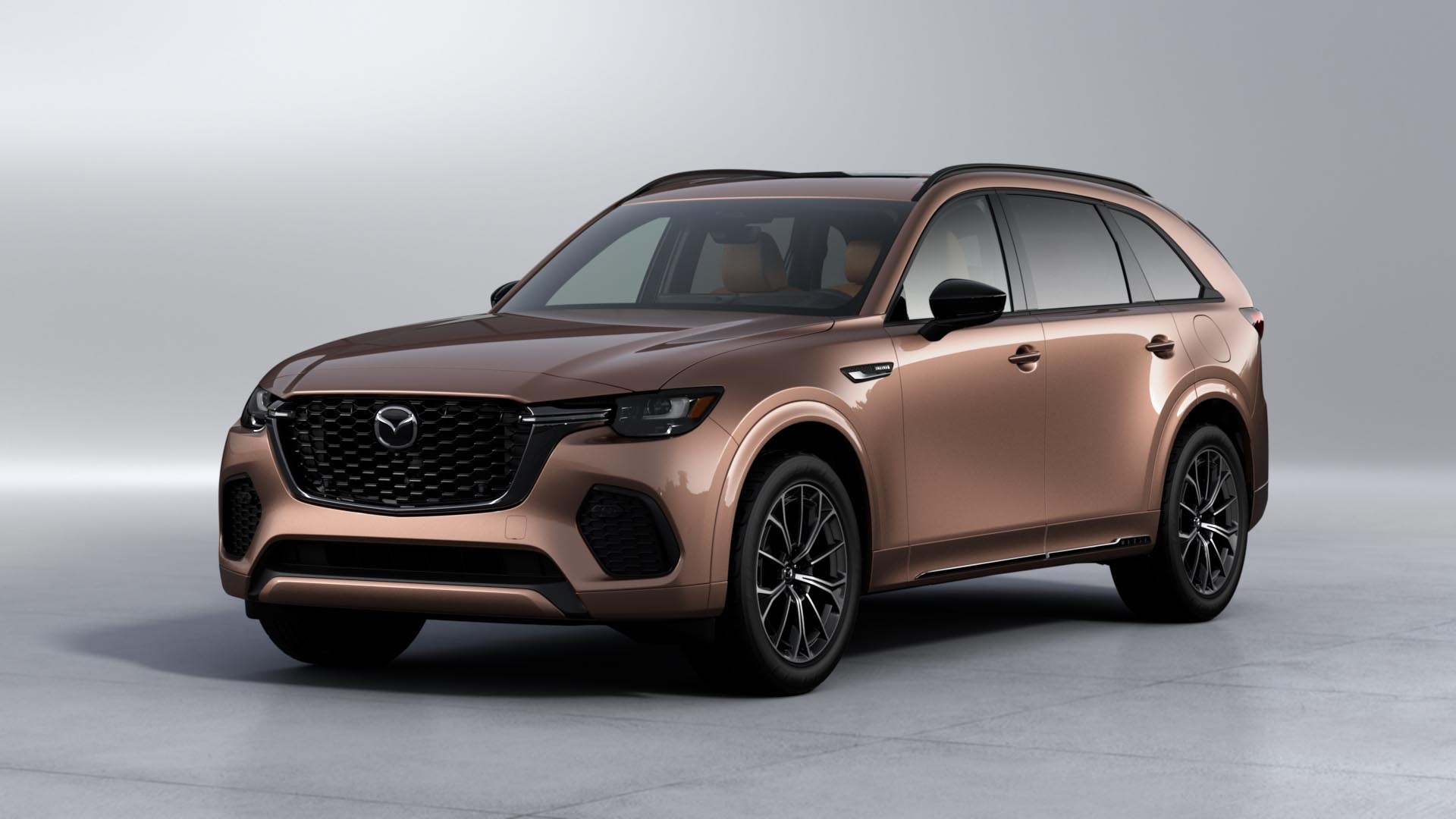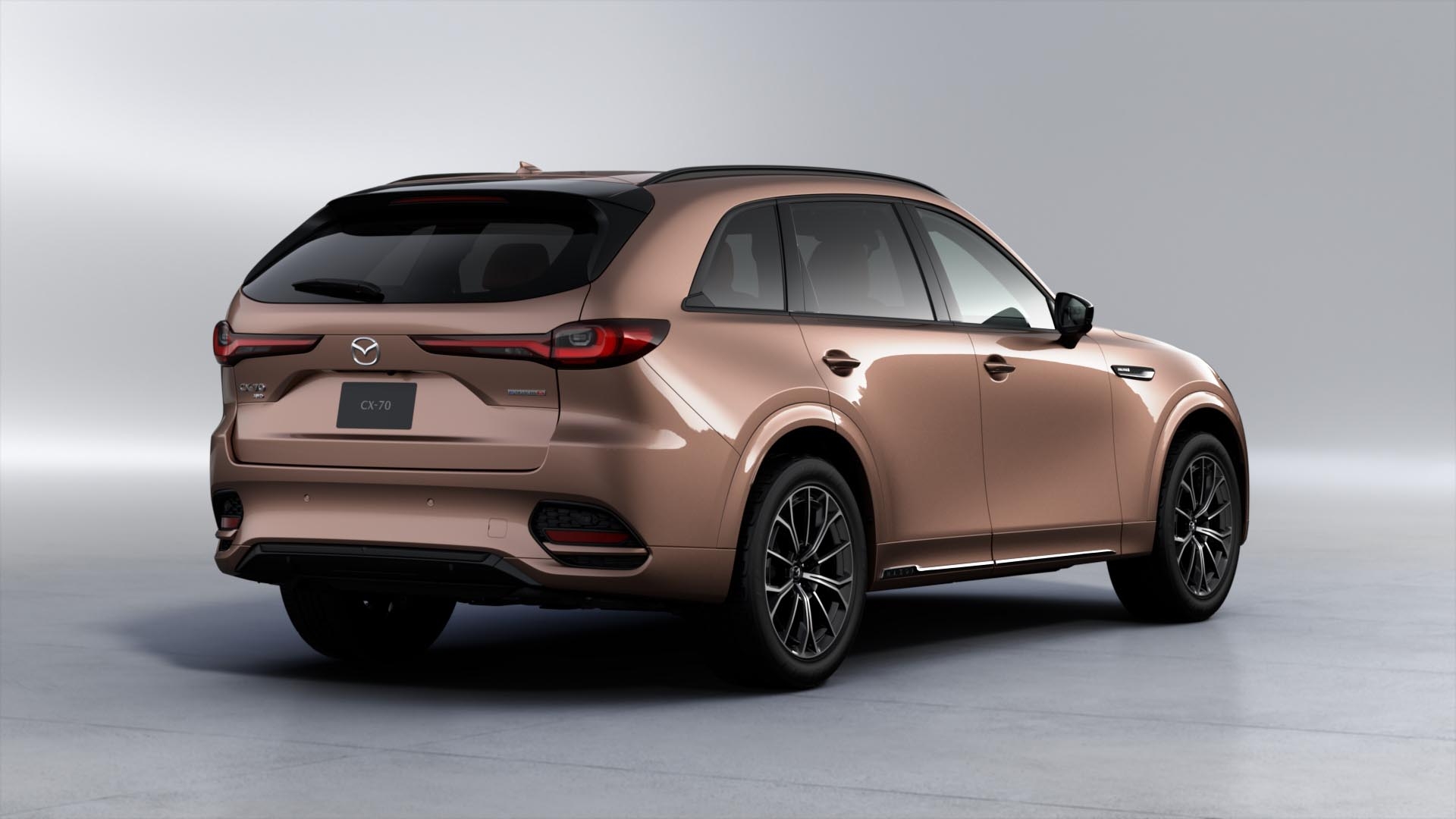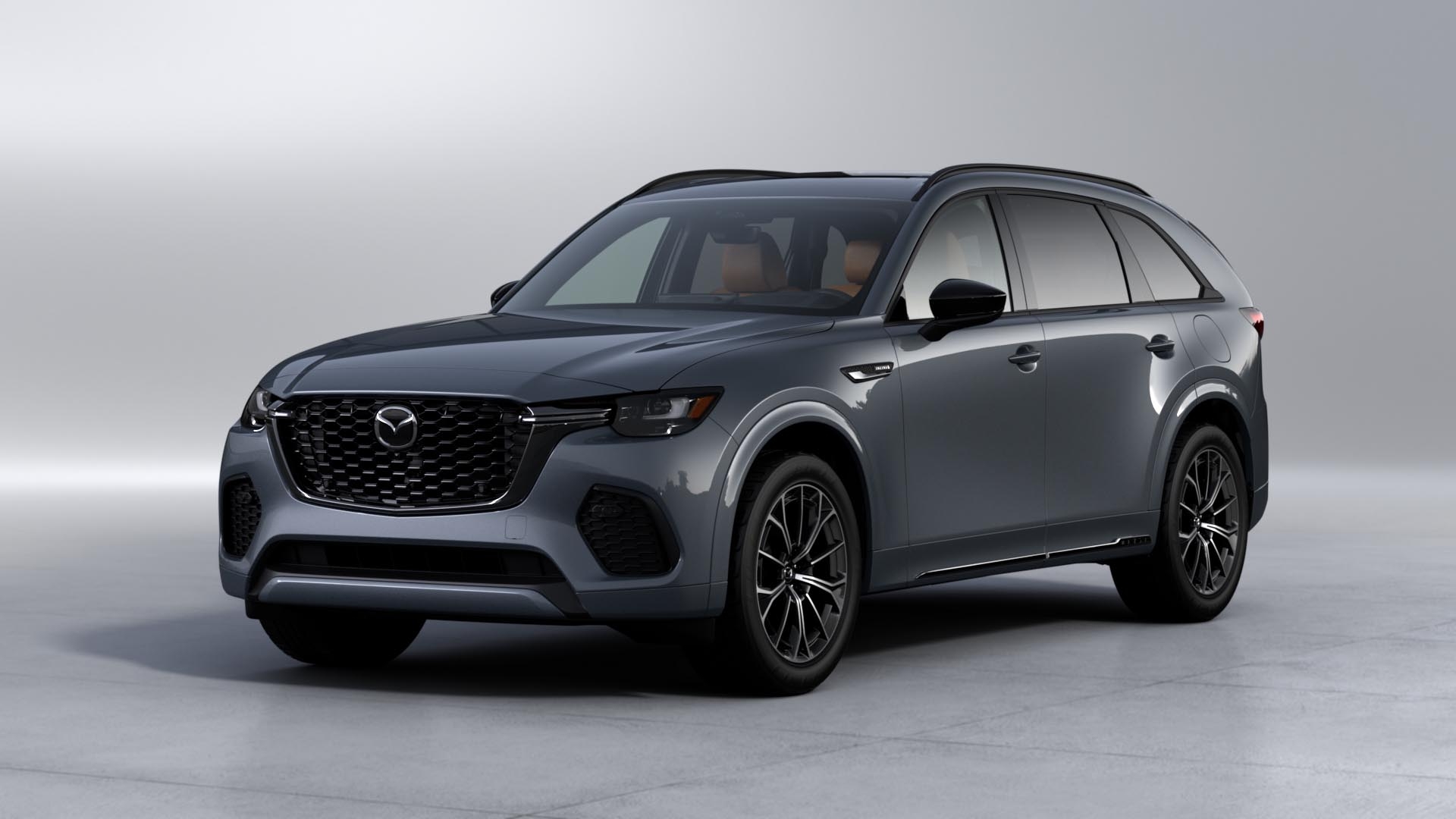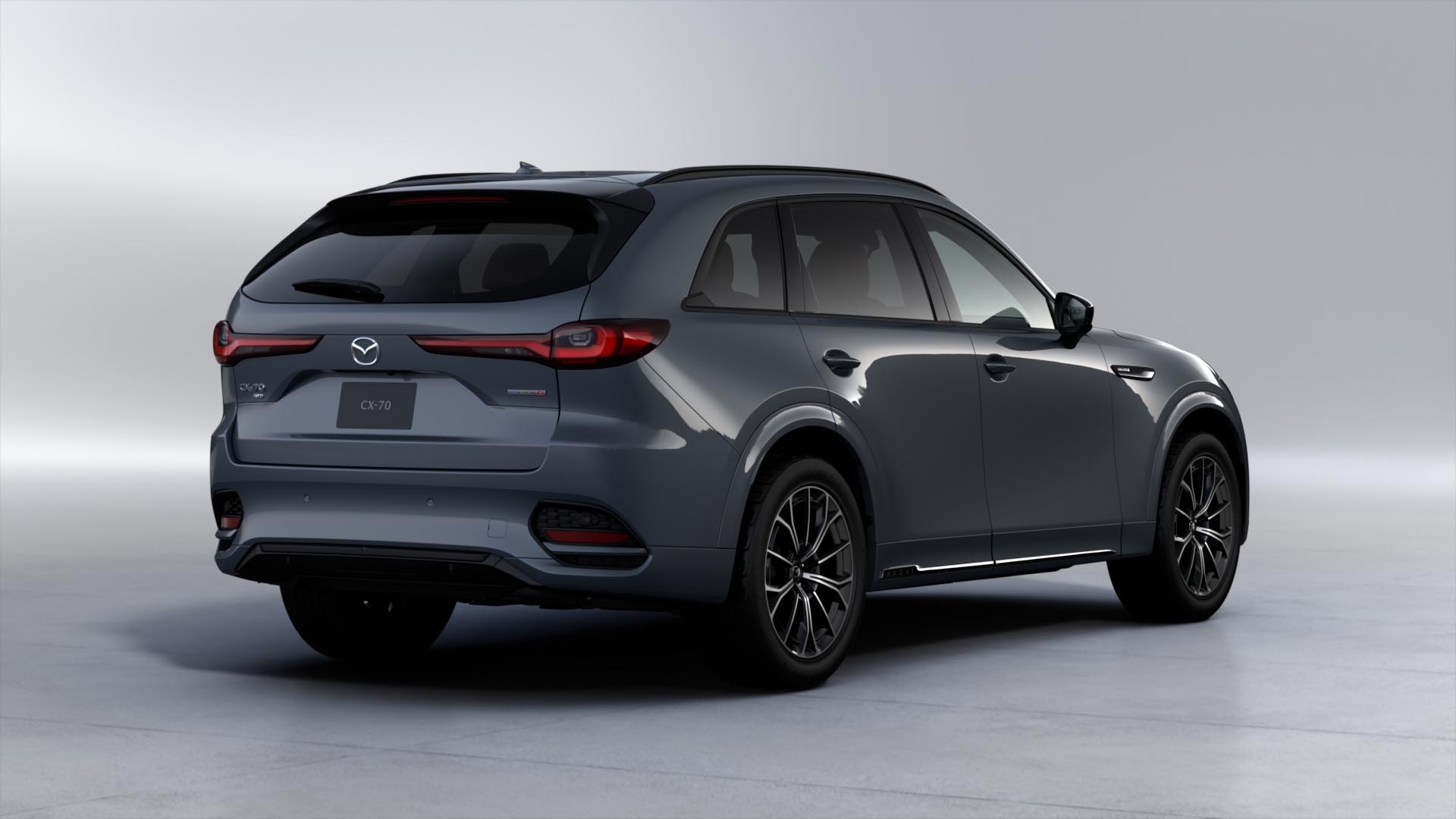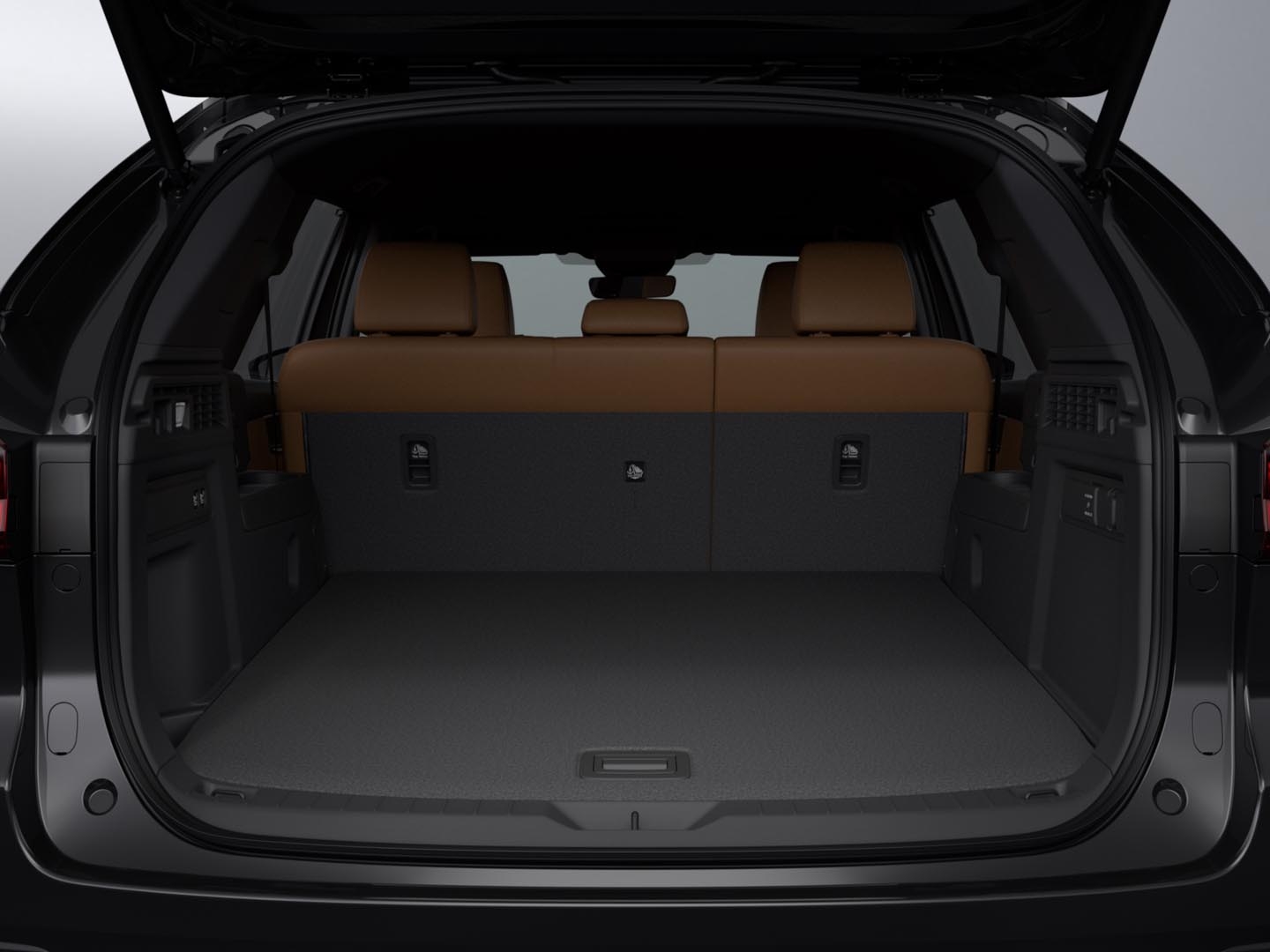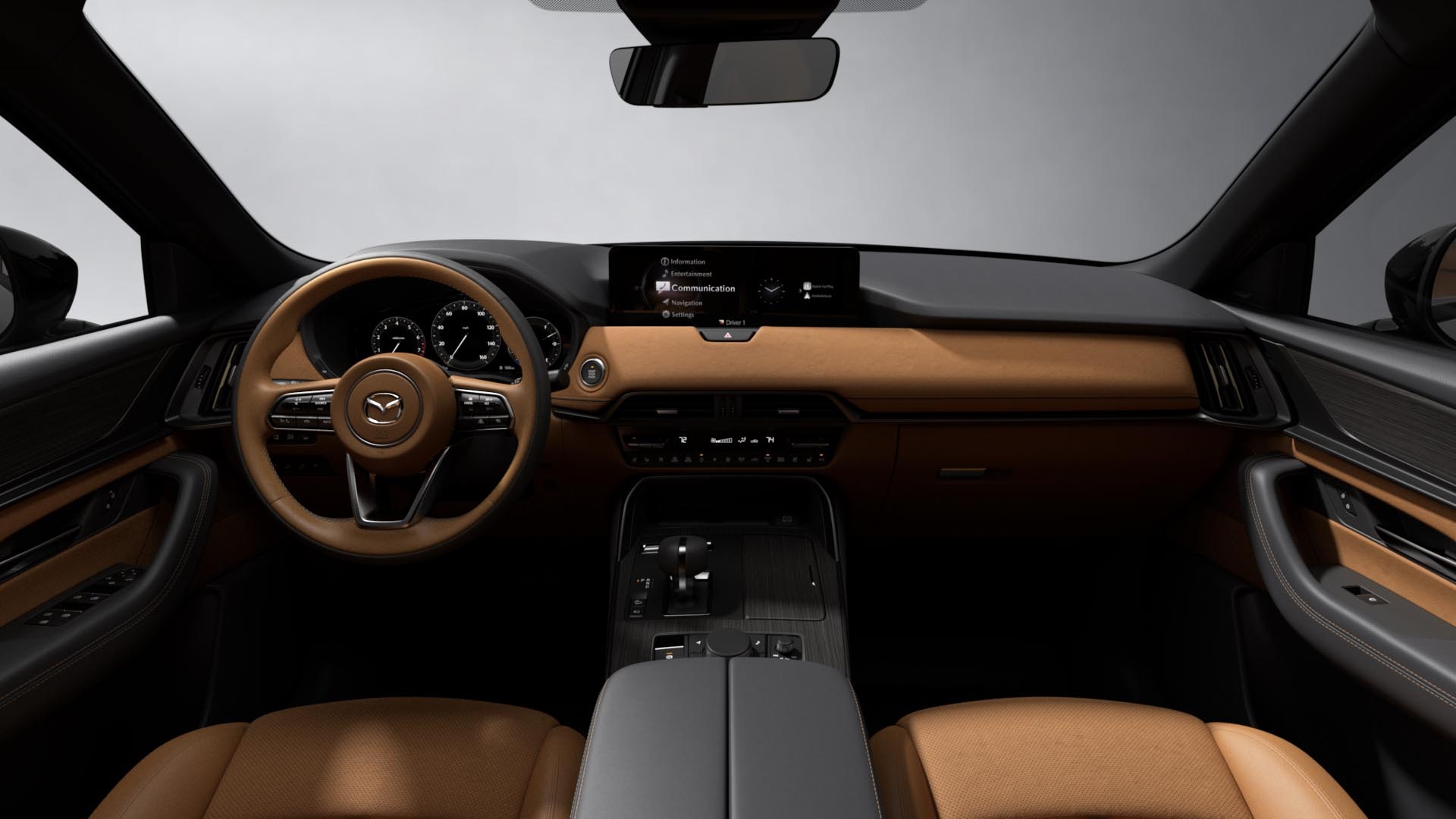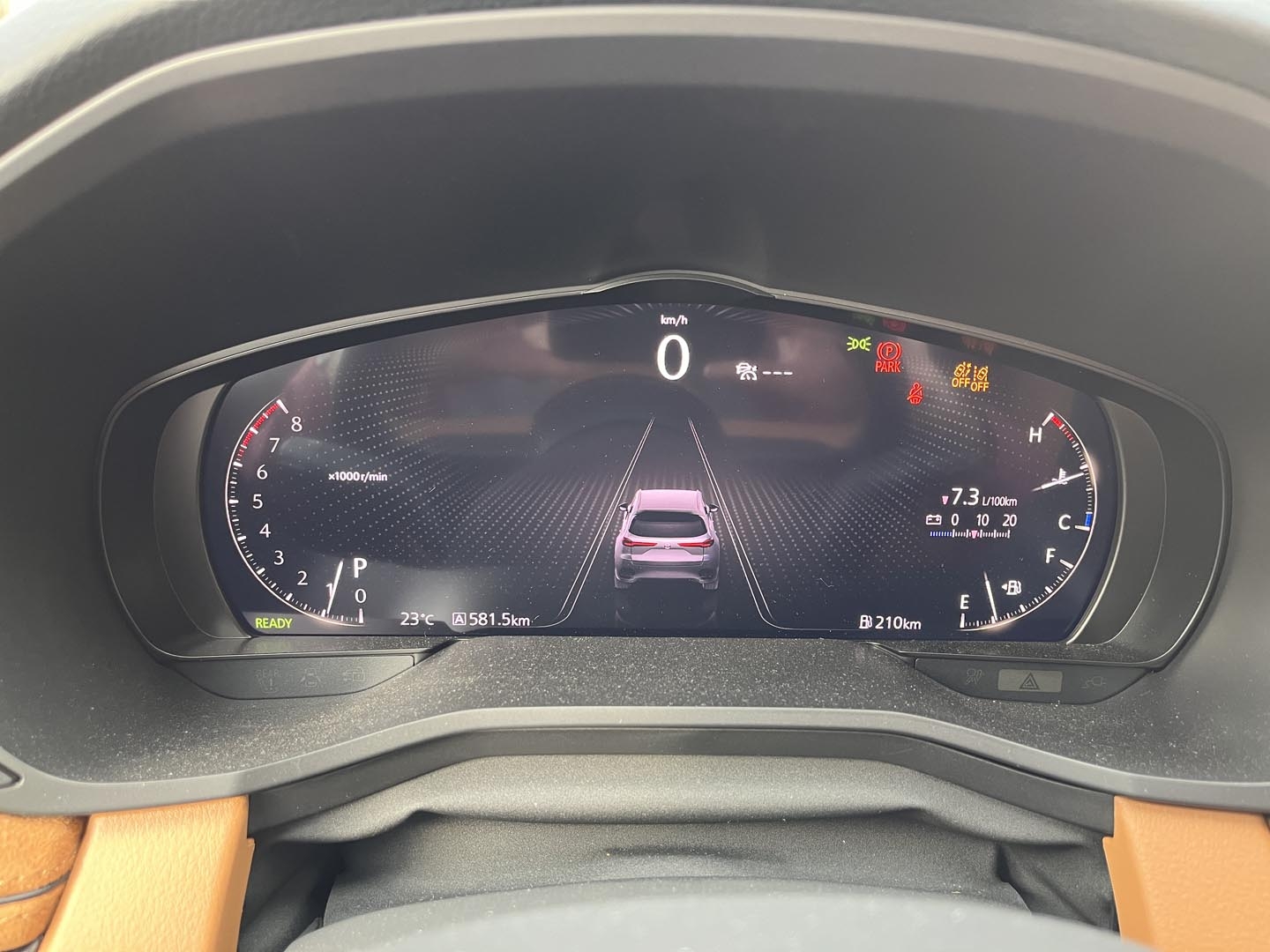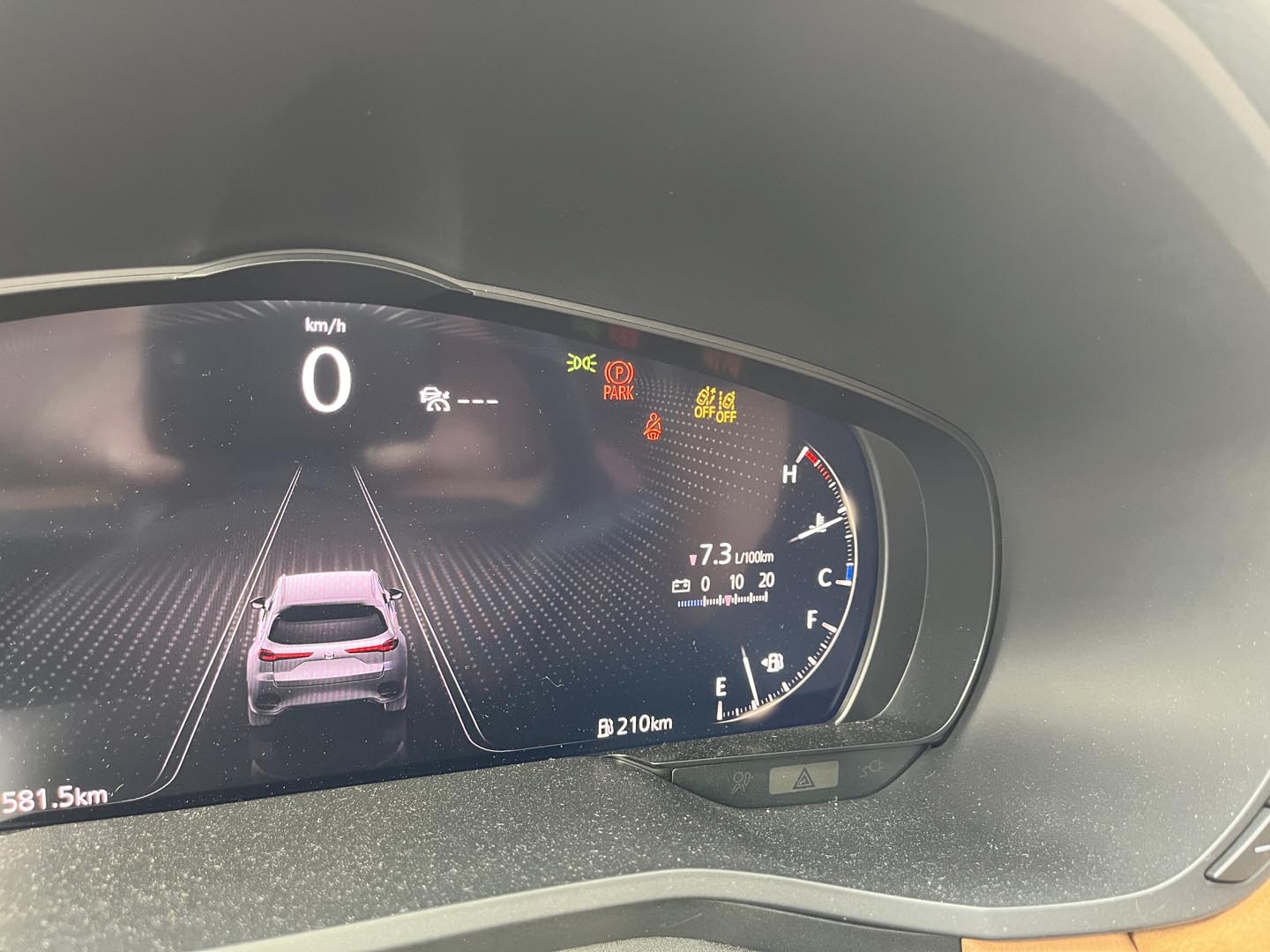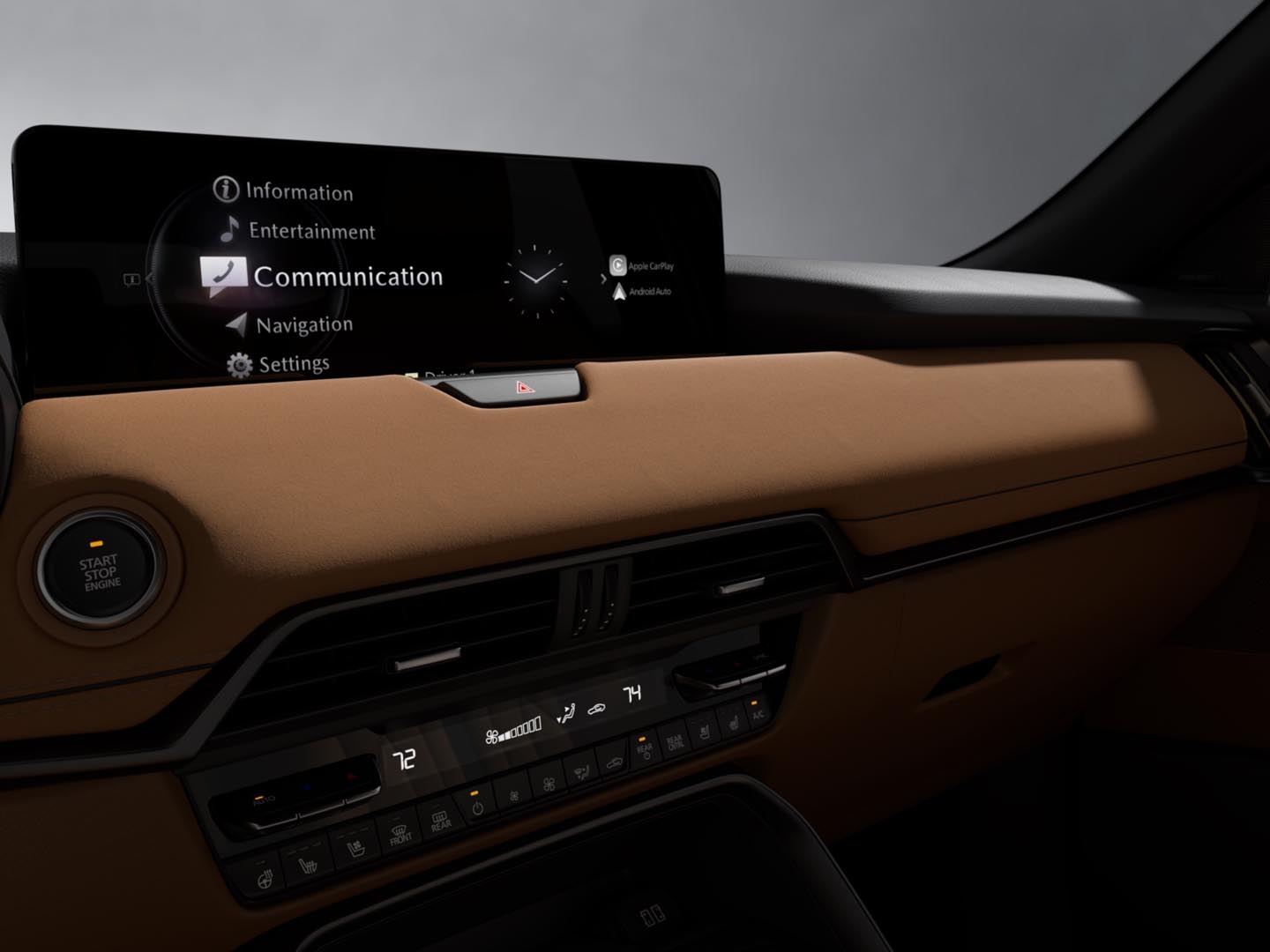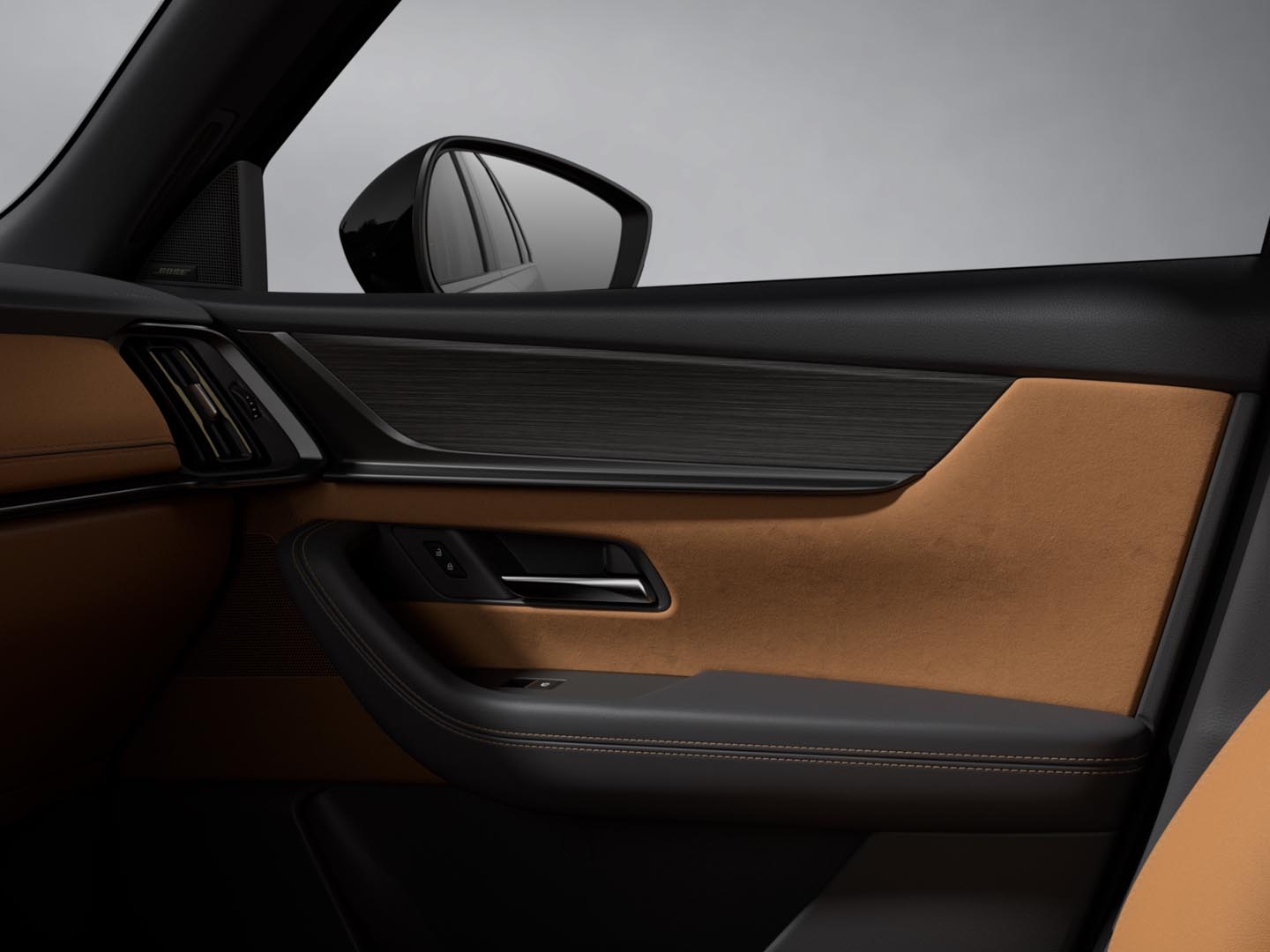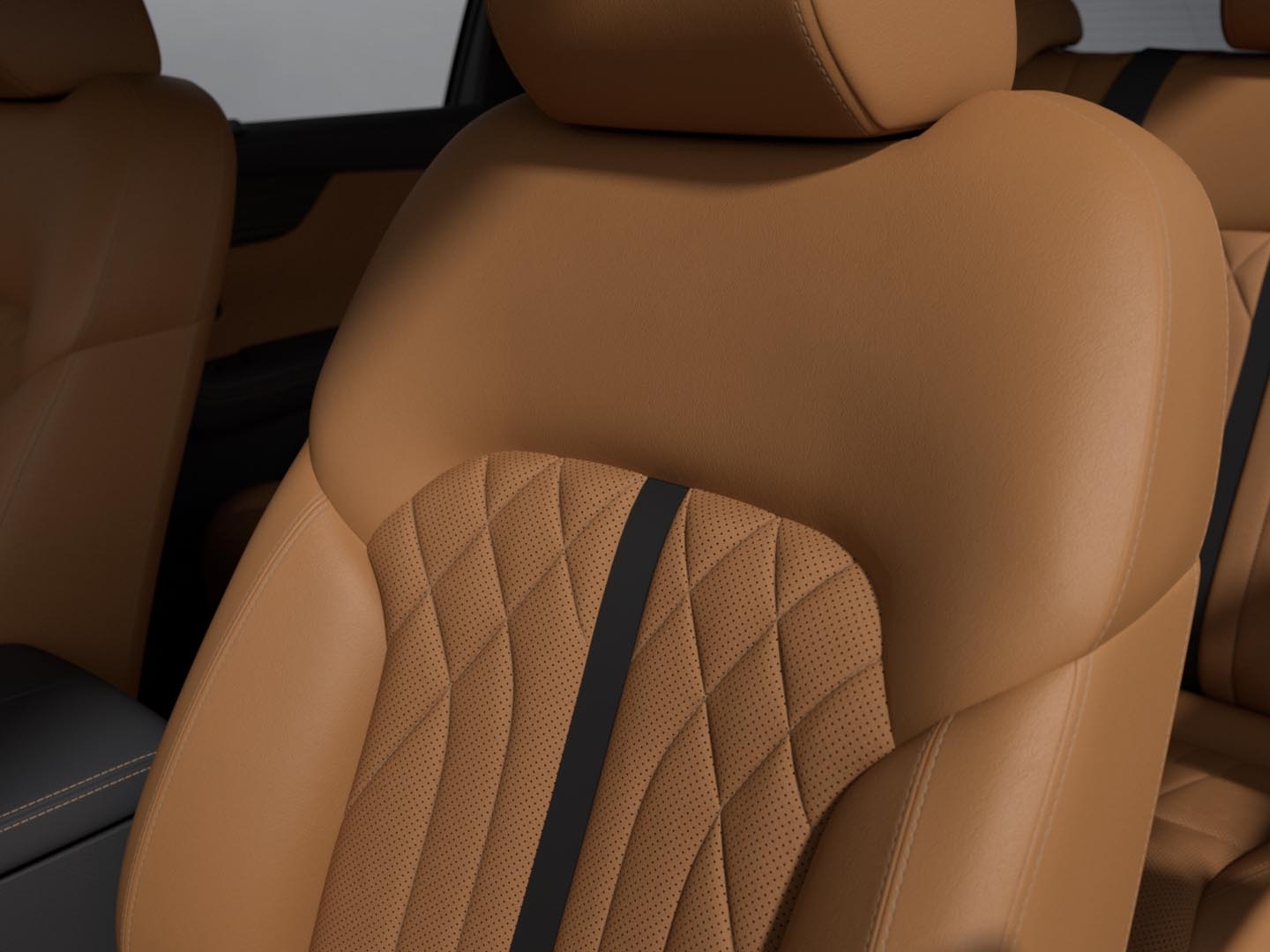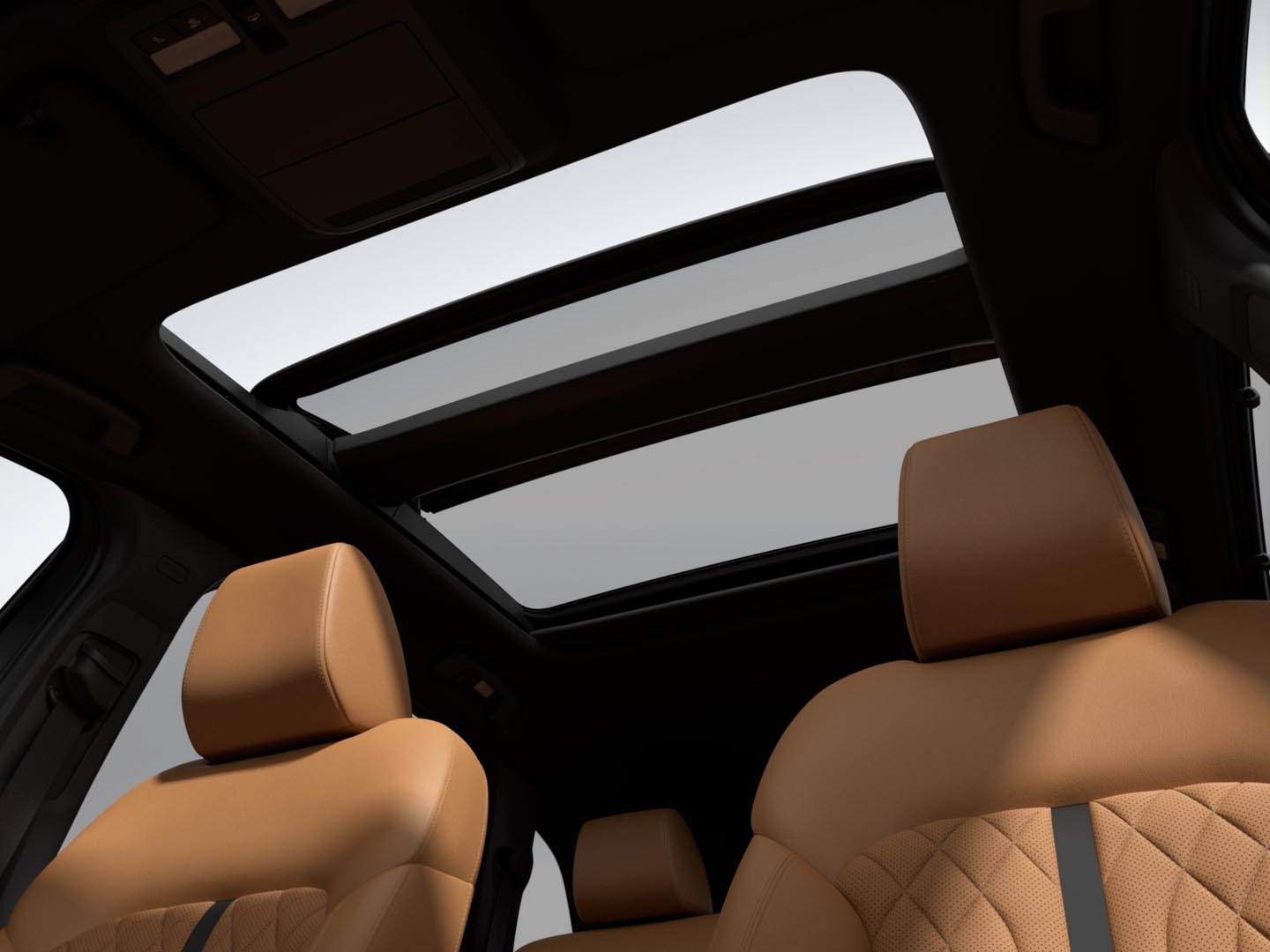
MAZDA CX-70 2025
Mazda CX-70 or CX-90? The devil is in the (very) small details!
Pros and cons
Pros
- Excellent handling for the size
- Powerful, refined and frugal 6-cylinder engine
- Steering very precise in corners
- Somptuous finish (GT versions and above)
- Large cargo space for a 5-seater SUV
- Very good Bose audio system
- Realistic electric range (plug-in versions)
Cons
- Transmission jerky at low speeds
- Noisy gas engine (plug-in versions)
- Stiff suspension, even harsh in town
- Lack of padding in the front seats
- Large and impractical center console
- Controversial multimedia system
- Vehicle too similar to the CX-90
Overview
Launched in the spring of 2024, the CX-70 is Mazda's latest utility vehicle. The manufacturer then presented it as an all-new model, but apart from some very light exterior changes, it is nothing more than a five-seater version of the CX-90 introduced a year earlier. Like the latter, it offers a choice between two hybrid engines, a non-pluggable inline-six and a plug-in four-cylinder. The main drive wheels are at the rear, but a reactive all-wheel drive system engages the front axle when necessary.
Several manufacturers assemble both two- and three-row midsize SUVs from a common platform. Consider the Chevrolet Blazer and Traverse, the Jeep Grand Cherokee and its L variant, or the Atlas and Atlas Cross Sport at Volkswagen. In each of these cases, the two-row vehicle is the shorter of the pair and sports its own style, sometimes even on the inside.
Instead, Mazda simply removed the third row of the CX-90, replaced some of its chrome with dark moldings, installed specific rims and added a affixed a new badge on the tailgate. It also changed the colour choices to reinforce the CX-70's "sporty" image, both on the outside and in the cabin – notably offered in red, as in some Mazda 3s.
The manufacturer also decided to skip the GS trim level for the CX-70, while it remains in the catalogue of its "big brother". The 70's range therefore starts with the six-cylinder GS-L model, offered at $52,540 (including transport, preparation and dealer fees), or $3,850 more than the most affordable CX-90. On the other hand, when comparing the same variants for the two vehicles, the CX-70 shows an advantage of $1,000.
The plug-in hybrid engine adds $9,000 to the bill before government subsidies are deducted. The latter currently stand at $7,500, but they will decrease to $4,500 as of January 1, 2025, due to the gradual elimination of the Quebec government incentive. These amounts always apply after tax.
So why opt for a CX-70 instead of a CX-90? Is it better to choose the plug-in hybrid version or the six-cylinder model, which Mazda calls a “mild hybrid”? We drove all of these variants, built without exception in Japan, to answer these questions and compare them to the competition.
Verdict
Don’t waste time trying to differentiate the CX-70 from the CX-90 from a driving standpoint. Both are impressively dynamic once you get going, but they struggle to hide their weight at low speeds, thanks in part to heavy steering and an indecisive transmission. Each also stands out for its gleaming finish and quietness at steady speeds, but they lose some of their refinement due to a suspension that’s too firm for this type of vehicle.
There’s only one real question: Do you need more than five seats, even if it’s only once or twice a year? If so, don’t deprive yourself of the CX-90, which only costs about $15 more per month to lease, before negotiation. You won’t lose any of the CX-70’s vast cargo space once the third row is folded down – except for a bit of storage under the trunk floor. And if your priority is comfort and smoothness before cornering prowess, take a look at Honda, Toyota, Hyundai and Kia, noting that the last two brands may impose some sacrifices in terms of service and reliability.
Finally, provided you regularly travel short distances, you could quickly recoup the extra cost of a plug-in CX-70 compared to a six-cylinder model, which remains cheaper even taking into account government rebates for the PHEV. Once the electric range is depleted, fuel consumption almost reaches that of a non-plug-in variant, which at least has the advantage of being among the lowest in the segment.
Evaluation
Watch our complete video review (in French with English subtitles)
Safety features
- Antilock brakes with electronic brakeforce distribution and brake assist
- Stability and traction control
- Hill-start assist
- Hill-descent assist
- Front airbags
- Front and rear side airbags
- Side curtain airbags
- Front and rear outbord seats seatbelt pretensioners
- Five adjustable head restraints (front anti-whiplash)
- Rear passenger reminder
- Rearview camera
- Tire pressure monitor
- Forward collision alert
- Forward automatic emergency braking with pedestrian detection
- Lane departure alert with steering assist
- Lane centering assist
- Automatic high-beams
- Adaptive cruise control
- Blind-spot monitoring (with automatic steering assist on GT-P and Signature)
- Rear cross-traffic alert (with automatic braking on GT, GT-P and Signature)
- Driver distraction detection system (with camera driver monitoring on GT, GT-P and Signature)
- Front cross-traffic alert (with automatic braking on Signature), rear automatic emergency braking (with pedestrian detection on Signature), front and rear parking sensors and surround-view monitor (standard, GT, GT-P and Signature, unavailable, GS-L)
- Collision mitigation assist and automatic post-collision braking (standard, Signature, unavailable, other trim levels)
Crash test results
National Highway Traffic Safety Administration
Overall score: Not tested
Frontal impact: PHEV: 5/5; 6-cyl.: 4/5
Side impact: Not tested
Rollover resistance: 5/5
Insurance Institute For Highway Safety
Moderate overlap frontal impact: 4/4
Small overlap frontal impact: 4/4
Side impact: 4/4
